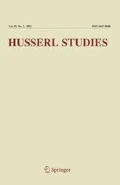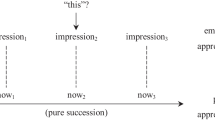Abstract
The article deals with the lines along which manifold senses of horizonedness emerge and their reference to potentiality as a starting-point. The first section examines Gurwitsch's analyses of field-potentialities and margin-potentialities in the light of distinctions drawn by Husserl in terms of latency and patency. It is contended that Husserl's concept of latency encompasses both modes of potentiality. The second section shows how the world-horizon functions as a background-horizon and alternation-horizon conceived of as the two fundamental modes of non-thematic consciousness. In this respect, an attempt is made to link this theme with Gurwitsch's description of the acquisition of the character of positional index as a worldly existent. The third section is concerned with how potentiality develops into an all-encompassing domain that can be anticipated as an ideal totality and into a pregiven ground, and outlines an approach to the complementarity of this threefold characterization. This development falls out of Gurwitsch's framework for the analysis of horizonedness. The article concludes with a characterization of the encasement-of-one-in-another of horizons. Reasons are suggested for the application of some ideas of Gurwitsch on thematic transformation to this sequence of levels.
Similar content being viewed by others
Author information
Authors and Affiliations
Rights and permissions
About this article
Cite this article
Walton, R.J. On the Manifold Senses of Horizonedness. The Theories of E. Husserl and A. Gurwitsch. Husserl Studies 19, 1–24 (2003). https://doi.org/10.1023/A:1022224629243
Issue Date:
DOI: https://doi.org/10.1023/A:1022224629243




